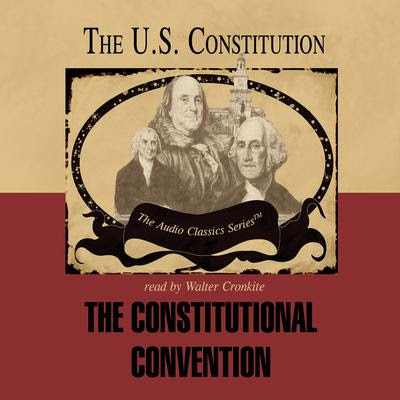“Resolved. that the right of suffrage in the first branch of the national Legislature ought not to be according to the rule established in the articles of confederation: but according to some equitable ratio of representation — namely, in proportion to the whole number of white and other free citizens and inhabitants of every age, sex, and condition including those bound to servitude for a term of years, and three fifths of all other persons not comprehended in the foregoing description, except Indians, not paying taxes in each State.”
“Resolved. that the right of suffrage in the second branch of the national Legislature ought to be according to the rule established for the first.”
– Articles 7 and 8 of the “Virginia Plan” (1787), the first draft of the United States Constitution (written by James Madison)
I had already seen a fine docudrama about the Constitutional Convention, before I ever listened to this audiobook. This was “A More Perfect Union: America Becomes A Nation” (which I review here). Obviously, there are advantages to a docudrama over any audiobook, such as the entertainment value of the powerful visuals that it includes. The docudrama may also be better at covering the greatest issue of the Convention, which was the controversy over representation. But this audiobook is better at covering pretty much everything else about the Convention. It covers issues not touched upon in the docudrama, such as the debates over the executive and judicial branches. These debates were quite important for the final document.
Nonetheless, they do cover the controversy over representation to a large degree in this audiobook. They even cover the “Three-Fifths Clause,” the only part of the representation controversy that they actually cover better in this audiobook. This is because the docudrama mentioned did not want to dive into all of the complex controversies over slavery (it just covered one of them). The Three-Fifths Clause was as much about slavery as it was about representation. Indeed, it was the only clause in the Constitution that involved both of these two major issues. They also show how there was precedent for the Three-Fifths Clause in the various Southern states. This may have been why the Convention decided upon this number in this infamous compromise.
Interior of Independence Hall
But the Three-Fifths Clause only involved the House of Representatives – and, to a lesser extent, the electoral college that chooses the president. The Senate was based upon an entirely different rule. This was that each state would have exactly the same number of votes, regardless of population. This is the only clause in the Constitution that is permanently immune to constitutional amendments. The part of the Constitution giving the amendment process actually says that “no state, without its consent, shall be deprived of its equal suffrage in the Senate,” even if such an amendment were actually passed. (Source: Article 5 of the Constitution) Nonetheless, the large states got their way with regards to the House of Representatives. In that house, representation was instead apportioned according to population, which was a departure from how things had been done under the Constitution’s predecessor. This originally included the same Three-Fifths Compromise found in the “Virginia Plan” (the first draft of our Constitution), but the Three-Fifths Compromise was later undone by the Fourteenth Amendment. There was another important change by the Sixteenth Amendment, which said that taxes would no longer be proportioned to any kind of population count. (More on these changes here.)
The Constitutional Convention, 1787
But the greatest advantage of this audiobook is in its coverage of the executive and judicial branches. These are issues not touched upon in the aforementioned docudrama, as mentioned earlier. They also show how there was a major controversy over the “necessary and proper” clause, which was felt as early as this Constitutional Convention. During the later ratification debates, it was the most controversial clause in the Constitution. They also cover other controversies over slavery, such as the Slave Importation Clause and the Fugitive Slave Clause. There were other major controversies in the Constitutional Convention, which are also covered here.
James Madison
James Madison wrote the first draft of our Constitution, which was the document known as the “Virginia Plan.” There were major changes to it during the Constitutional Convention, but it still had a massive influence on the final document despite this. Once these changes were agreed upon, it was Gouverneur Morris who wrote the final draft of our Constitution. It is to him that we owe the famous preamble. (See this other blog post, for the text of the Preamble.)
Gouverneur Morris
This audiobook is a great introduction to this hallowed story. It has a strong emphasis upon the philosophical debates that were present in the Constitutional Convention. But it is also a dramatic telling of a very human story, of how the United States Constitution came to be.
Some quotes from the United States Constitution about separation of powers:
“All legislative powers herein granted shall be vested in a Congress of the United States, which shall consist of a Senate and House of Representatives.” – Article 1, Section 1
“The executive power shall be vested in a President of the United States of America.” – Article 2, Section 1
“The judicial power of the United States, shall be vested in one supreme court, and in such inferior courts as the Congress may, from time to time, ordain and establish.” – Article 3, Section 1
If you liked this post, you might also like:
Part of the audiobook series
The United States Constitution
The Constitutional Convention
See also the audiobook series
The United States at War
Others to be covered later
See also another audiobook series
The Giants of Political Thought
Others to be covered later








No comments:
Post a Comment